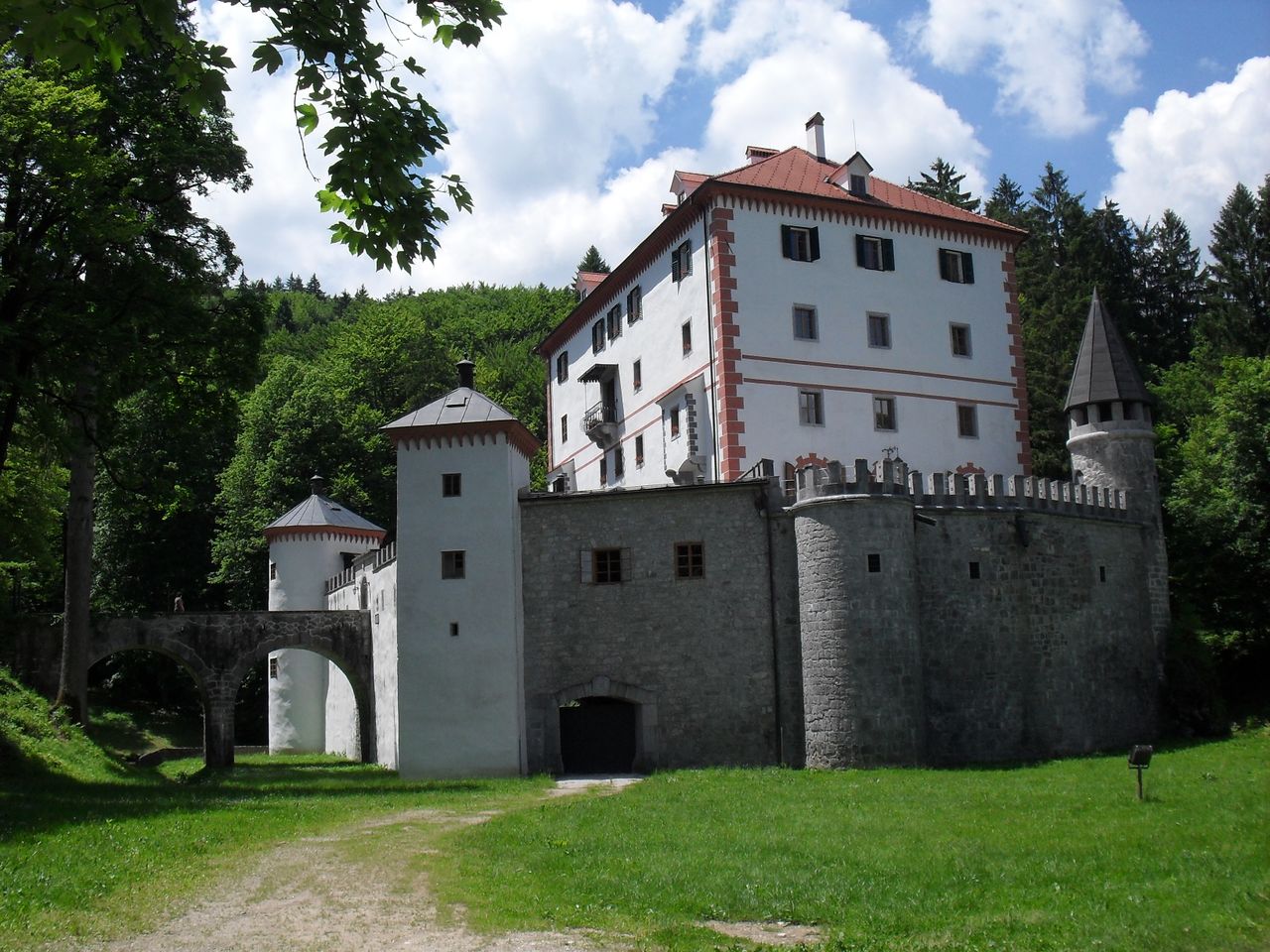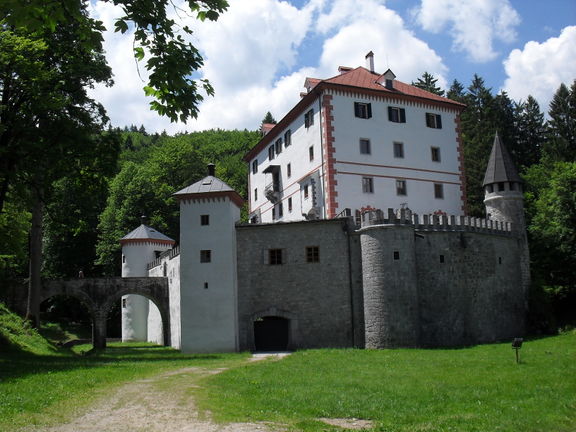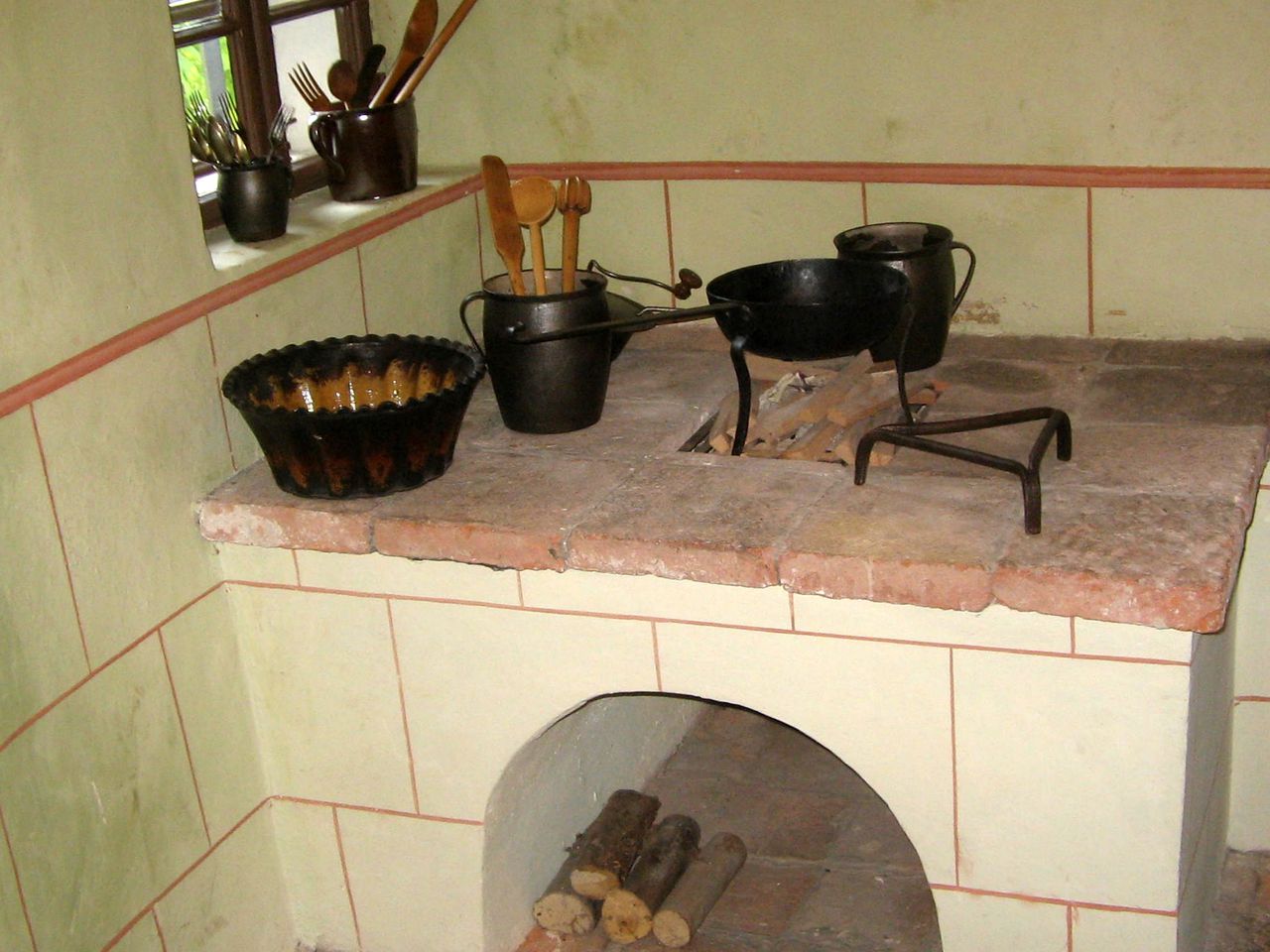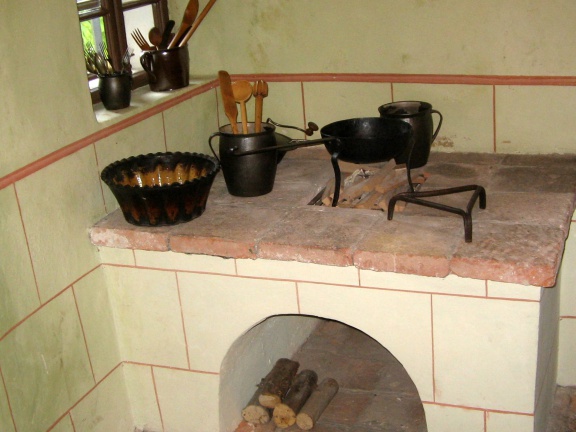 Snežnik Castle, being the only Slovene Castle with genuine furnished interiors, came under the administration of the National Museum of Slovenia after its restoration in 2008.
Snežnik Castle, being the only Slovene Castle with genuine furnished interiors, came under the administration of the National Museum of Slovenia after its restoration in 2008.
The earliest record of Snežnik Castle dates from 1269 when it was owned by the patriarchs of Aquileia. The castle lies on a strategic site, on the edge of the Lož Valley under the Snežnik mountains surrounded by a beautiful park and vast forests with diverse and rich flora and fauna including big game ranging from bears, boars, wolves and lynxes, to wild fowl and deer, and was always favourite hunting residence. Throughout the centuries the castle has changed owners many times, but in 1853 the castle and associated forests of Snežnik were bought by German Prince Otto Viktor Schönburg-Waldenburg, who gave it to his third son Georg. Thereafter it remained in the Schönburg-Waldenburg family until 1945. The last caretaker Leon Schauta saved Snežnik Castle from destruction after the Second World War by keeping good relations with the locals before and after the war. Restoration began in the 1960s and the castle opened to the public in 1970/71. In 1983 two additional exhibition rooms were opened. After a restoration completed in 2008, the romantic state-owned castle came under the administration of the National Museum of Slovenia and is the only Slovene Castle with genuine furnished interiors.
Since 2014 the Floating Castle Festival has embedded into the picturesque surroundings of the castle the late summer "folk-puppet-music-theatre site-specific event".
NOT ROBOT, WRITING DONE, INFOBOX DONE, PROOFREAD DONE, FERTIK, NOVERIFY, NODEPO, PHOTO, FEATURED, Article, NO LOGO, HAS MAP, Museums, Monuments and sites, Articles maintained by Ivan Pirnat, Castles, COVER

 Fireplace at the Miner's House - Ethnological Collection, 2007
Fireplace at the Miner's House - Ethnological Collection, 2007
The Miner's House and its ethnological collection in Idrija shows the household and living conditions of miners and their families in the past. Men in Idrija worked almost exclusively as miners in the Idrija Mercury Mine; women were housewives, taking care of the children and trying to earn additional money with various domestic jobs, typically from knitting and making Idrija bobbin-lace. Most families could not afford to have their own house but were usually tenants in private homes and, after 1870, resided in apartment blocks called prhauzi.
The Miner's House was built at the end of the 18th century and has preserved the main features of typical Idrija architecture. After undergoing extensive renovation in the 1990s, the house is today protected as a cultural monument and administered by the Idrija Municipal Museum. The furniture and tools of the household date back to the first half of the 20th century.
NOT ROBOT, WRITING DONE, INFOBOX DONE, PROOFREAD DONE, FERTIK, NOVERIFY, NODEPO, PHOTO, FEATURED, Article, NO LOGO, Updated 2020, HAS MAP, Museums, Monuments and sites, Articles maintained by Ivan Pirnat, Ethnographic museums and collections, Mercury mining heritage







